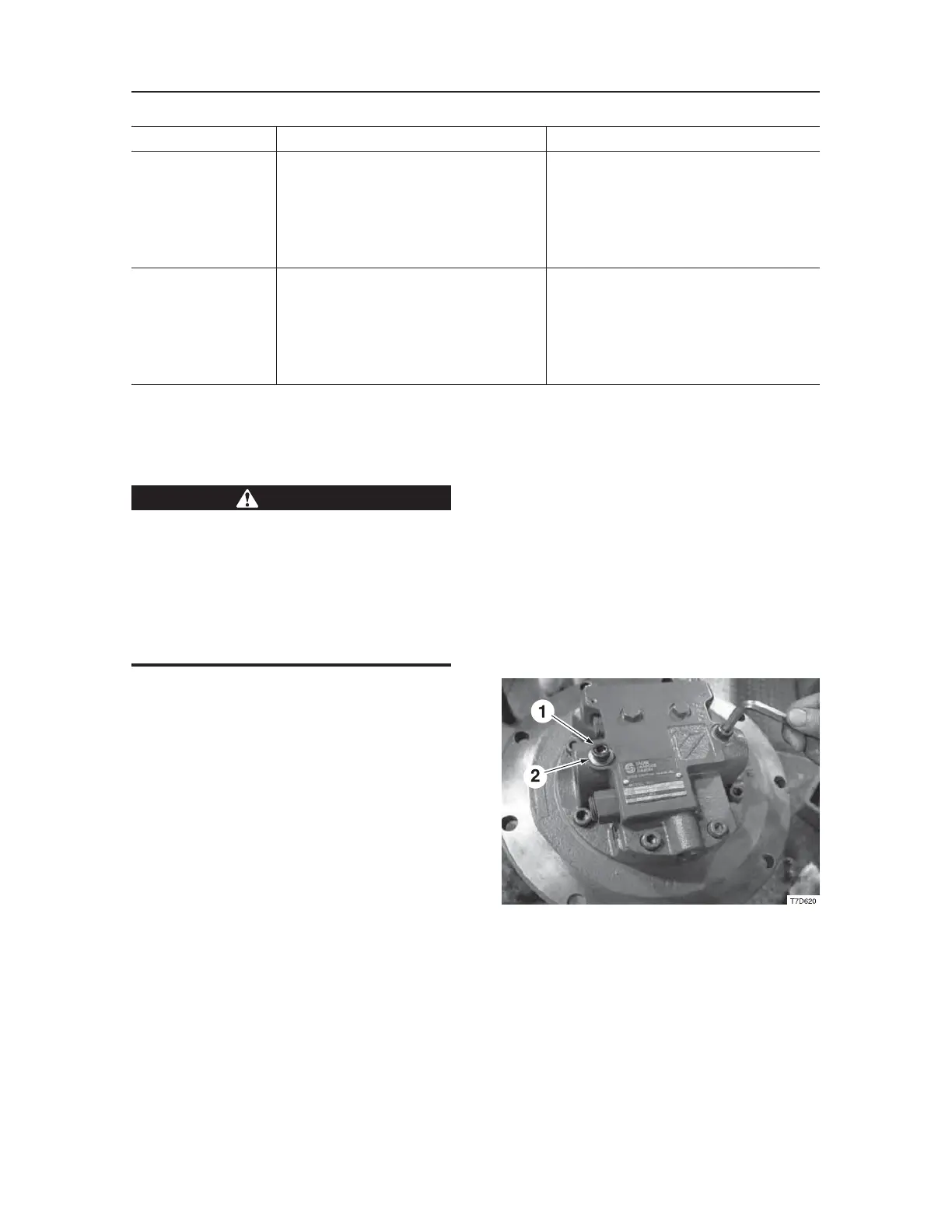IV-135
HYDRAULIC UNITSTRAVEL MOTOR
Parking brake
Symptoms Major causes Remedies
Braking force is
insufficient or not
evenly applied
• The total thickness of three friction discs
and four center discs is 13.5 mm or less
• Disc surface is faulty
• Spring is damaged
• Bolt for manual releasing is being fitted
• Replace the discs.
• Repair or replace.
• Replace the spring.
• Remove the bolt for manual release, and
fit the plug.
Abnormal heat gen-
eration due to brake
drag
Release of braking is faulty
• Oil leak due to O-ring breakage
• Orifice is clogged
• Pilot pressure for the releasing is not
working
• Replace the O-ring.
• Clean the orifice.
• Check whether the specified pressure
is generated in the pilot port, and then
check and repair each device.
Mechanical releasing of the brake
WARNING
While the brake is mechanically released, the
piston motor loses its mechanical braking ca-
pability. The mechanical braking capability of
the vehicle must be maintained by means of
a vehicle brake, or for stationary equipment,
must be maintained by means of an equipment
brake in order to avert any danger to life and
limb.
In case of lacking brake-bleeding pressure it may
be necessary to move a stationary machine. For this
purpose it is possible to release the brake mechani-
cally.
For mechanical releasing, prepare two socket head
screws 1 of M10×90 and two hard washers (2)
of M10. For brake releasing, the two socket head
screws must be turned uniformly in a clockwise
direction (alternately 1/2 rotation) in order to avoid
cocking of the piston.
Turning the screws pulls the brake piston against the
effect of the brake spring and thus the braking effect
is neutralized.
Turn the screws until they come into a contact with
the brake piston and continue until the piston comes
against the stop. The brake has been released.

